James Ford was a Jacksonian member of the U.S. House of Representatives from Pennsylvania.

The Dillard Mill State Historic Site is a privately owned, state-administered property on Huzzah Creek in Crawford County, Missouri, that preserves a water-powered gristmill. The 132-acre (53 ha) site has been operated as a state historic site by the Missouri Department of Natural Resources under a lease agreement with the L-A-D Foundation since 1975. The site was listed on the National Register of Historic Places in 2015.

The Hyland Hotel in Monticello, Utah, also known as the Wood/Summers House, was built between 1916 and 1918 by Joseph Henry Wood as a single-family residence. In 1924 the bungalow was adapted for use as a hotel with the conversion of the house's four upstairs bedrooms to nine guest rooms.

The Henry J. Wheeler Farm is a farmstead in Murray, Utah, United States, that is one of the few remaining late 19th century farmsteads in the Salt Lake Valley that has not been lost to expanding housing developments of metropolitan Salt Lake City. It has been listed on the National Register of Historic Places since 1976.
Horton Gristmill is a historic grist mill located at Malone in Franklin County, New York. It was built in 1853 and is a 2+1⁄2-story rectangular building with a gable roof. It is built of Potsdam sandstone. From 1917 into the 1950s, it was operated by the Malone Milling Company.
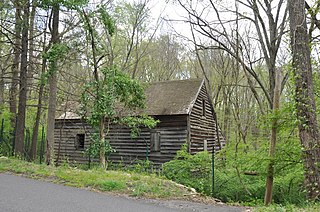
The Sylvanus Selleck Gristmill, also known as the Edwin Knapp Gristmill, is a historic gristmill at 124 Old Mill Road in Greenwich, Connecticut. Built about 1796, it is one of the oldest mill buildings in the state, and a rare surviving example of brace-frame construction. It was listed on the National Register of Historic Places in 1990.

The Simon Peter Eggertsen Sr. House is a historic house in Provo, Utah, United States. It is listed on the National Register of Historic Places. Now it has been repaired, repainted, and appointed with appropriate furnishings of the times, this home very much depicts pioneer design and craftsmanship. The Simon Peter Eggertsen Sr. House was designated to the Provo City Historic Landmarks Registry on March 7, 1996.

Hagood Mill is an operational water-powered gristmill built in 1845 by James Hagood near Pickens, South Carolina. It was listed in the National Register of Historic Places in 1972.
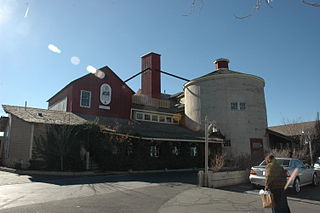
The Gardner Mill, at 1100 West 7800 South in West Jordan, Utah, United States was built in 1877 and is the focal point of today's Gardner Village.
The Whited Grist Mill is a historic gristmill located at the National Route 66 & Transportation Museum in Elk City, Oklahoma. Ruben Whited built the mill in 1903–04; his family operated the mill for its entire existence. The mill ground corn for Elk City's residents; a sign painted on the outside advertises "CORN GROUND INTO MEAL OR CHOPS AT ANY TIME". A 1928 addition brought a flour mill to the complex as well. The mill closed in 1944 due to replacement machinery shortages during World War II; it was the only gristmill to ever operate in Elk City. In 1985, the mill moved from its original site at 306 E. 7th St. to its current location.

The Hoag Gristmill and Knight House Complex is a former industrial site on State Prison Hollow Road in Starksboro, Vermont. With an industrial history dating to the 1790s, the surviving mill and c. 1820s house are an important reminder of the town's early industrial history. The complex was listed on the National Register of Historic Places in 1980.
The Brigham City Co-op was one of the most successful cooperative enterprises of the Mormons in Utah.
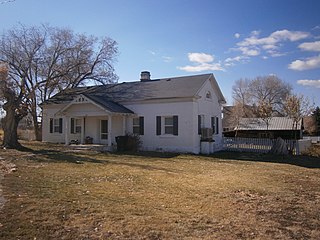
The Hans Ottesen House, at 202 S. 200 West in Manti, Utah, was built in c.1865-1875. It was listed on the National Register of Historic Places in 1987.
The Hans C. Jensen House, at 263 E. 100 South in Ephraim, Utah, is a historic pair-house built around 1870. It was listed on the National Register of Historic Places in 1983.

The Elsinore White Rock Schoolhouse, at 25 S. 100 East in Elsinore, Utah, was built in 1896. It was listed on the National Register of Historic Places in 1978.

The Hans Peter Olsen House, on Utah State Route 11 in Fountain Green, Utah, was built in 1877. It was listed on the National Register of Historic Places in 1976.
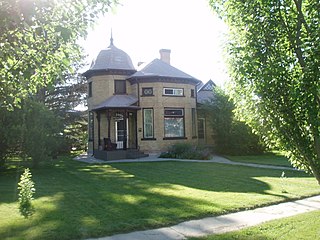
The Johnson-Nielson House, at 351 N. Main St. in Ephraim, Utah, was built in 1895. It was listed on the National Register of Historic Places in 1982.

The Jens Nielson House is a historic house in Bluff, Utah. It was built in 1890 for Jens Nielson, an immigrant from Denmark who converted to the Church of Jesus Christ of Latter-day Saints and arrived in the United States with his wife, née Elsie Rasmussen, in 1856. Nielson moved to San Juan County, Utah in 1879, and he served as the bishop of Bluffdale for 26 years. His house was designed in the Gothic Revival and Vernacular Victorian styles. It has been listed on the National Register of Historic Places since February 22, 1982.
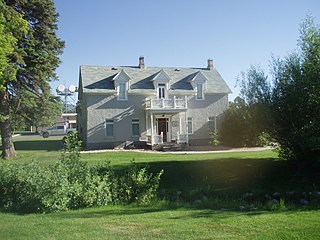
The Hans A. Hansen House is a historic house in Ephraim, Utah. It was built in 1862 by Hans A. Hansen, an immigrant from Denmark who converted to the Church of Jesus Christ of Latter-day Saints and arrived in Utah in 1853. Hansen had two wives: Annie, who had emigrated to the United States with him, and Mary Christiansen. He built a second house in the Scandinavian style, but this house was designed in a Vernacular English, or "traditionally American", style, which is interpreted by Tom Carter of the Utah State Historical Society as Hansen's willingness to integrate in American society. The house has been listed on the National Register of Historic Places since October 22, 1980.
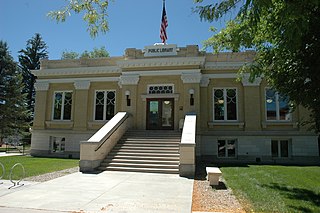
The Ephraim Carnegie Library is a historic one-story building in Ephraim, Utah. It was built in 1914-1915 by Hans Peterson, A.C. Nielson, and Thors Monsen as a Carnegie library, and it was designed in the Beaux-Arts style by Watkins, Birch & Wright. It has been listed on the National Register of Historic Places since October 25, 1984.
















